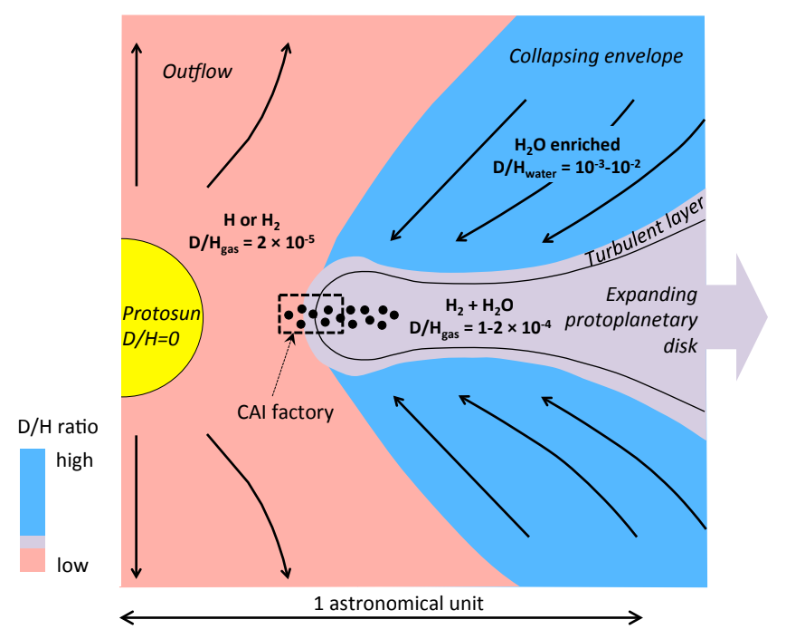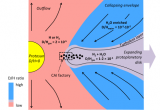Origin of water in the inner solar system: the initial isotopic composition of hydrogen finally revealed!
Water-rock interactions are essential in the formation of planets, especially that of the Earth. In fact, the origin of water in solar system objects has always been extensively studied. The isotopic composition of the hydrogen and oxygen atoms that compose the water molecule is in particular a key tracer of its sources. The hydrogen isotopic composition of the water of telluric planetary objects is intermediate between that of interstellar water very rich in deuterium and that of hydrogen gas depleted in deuterium by nuclear reactions in stars. This particular composition is usually explained by a mixture between interstellar water from the cold external regions of the solar system and solar hydrogen from the hot internal regions. The dominant model of a late origin of water on Earth by a cometary or asteroidal bombardment relies particularly on this composition. However, to validate all these models, a fundamental unknown remained until now: the initial isotopic composition of water in the solar system, especially in the inner regions of the solar system, where the bricks of the telluric planets were formed.
We measured the hydrogen isotopic composition of one of the oldest rocks in the solar system, a calcium-aluminum-rich meteoritic inclusion (CAI), using an innovative methodology developed for this study to access the isotopic composition of micrometric hydrogen-poor minerals formed at high temperature in the inner protoplanetary disk. Our results show the preservation of two different isotopic compositions in some micro-minerals:
- a solar isotopic composition almost devoid of deuterium is observed in reduced minerals condensed directly at high temperature.
- a terrestrial isotopic composition is observed in minerals oxidized before their incorporation in the CAI.
In conclusion, this dichotomy reflects the existence of two gaseous reservoirs during the formation of CAIs, i.e. in the first 200 000 years of the solar system before the formation of the first planetary embryos. One of these reservoirs is the solar gas at the origin of all solar system matter, measured directly for the first time in a meteorite. The second is a gas enriched in water vapor, having the isotopic composition of the Earth from the very beginning. Its formation can be explained by a massive contribution of interstellar water in the hot internal regions of the solar system during the collapse of the interstellar envelope and the formation of the protoplanetary disc. Its early existence implies that it is no longer necessary to invoke a late contribution to explain the isotopic composition of the water of the terrestrial oceans. Indeed, the bricks of the telluric planets formed in a gas that already had the terrestrial composition. The interstellar input at the origin of planetary water in the solar system is probably also at the origin of most planetary volatiles, such as oxygen and nitrogen.
The involved laboratories are IMPMC (Sorbonne University), IAS (Paris-Saclay University), NIMBE (CEA-Paris-Saclay University) and ICMMO (Paris-Saclay University).
Reference :
J. Aléon, D. Levy, A. Aléon-Toppani, H. Bureau, H. Khodja, and F. Brisset (2022) Determination of the initial hydrogen isotopic composition of the solar system, Nature Astronomy, released 3 february.





